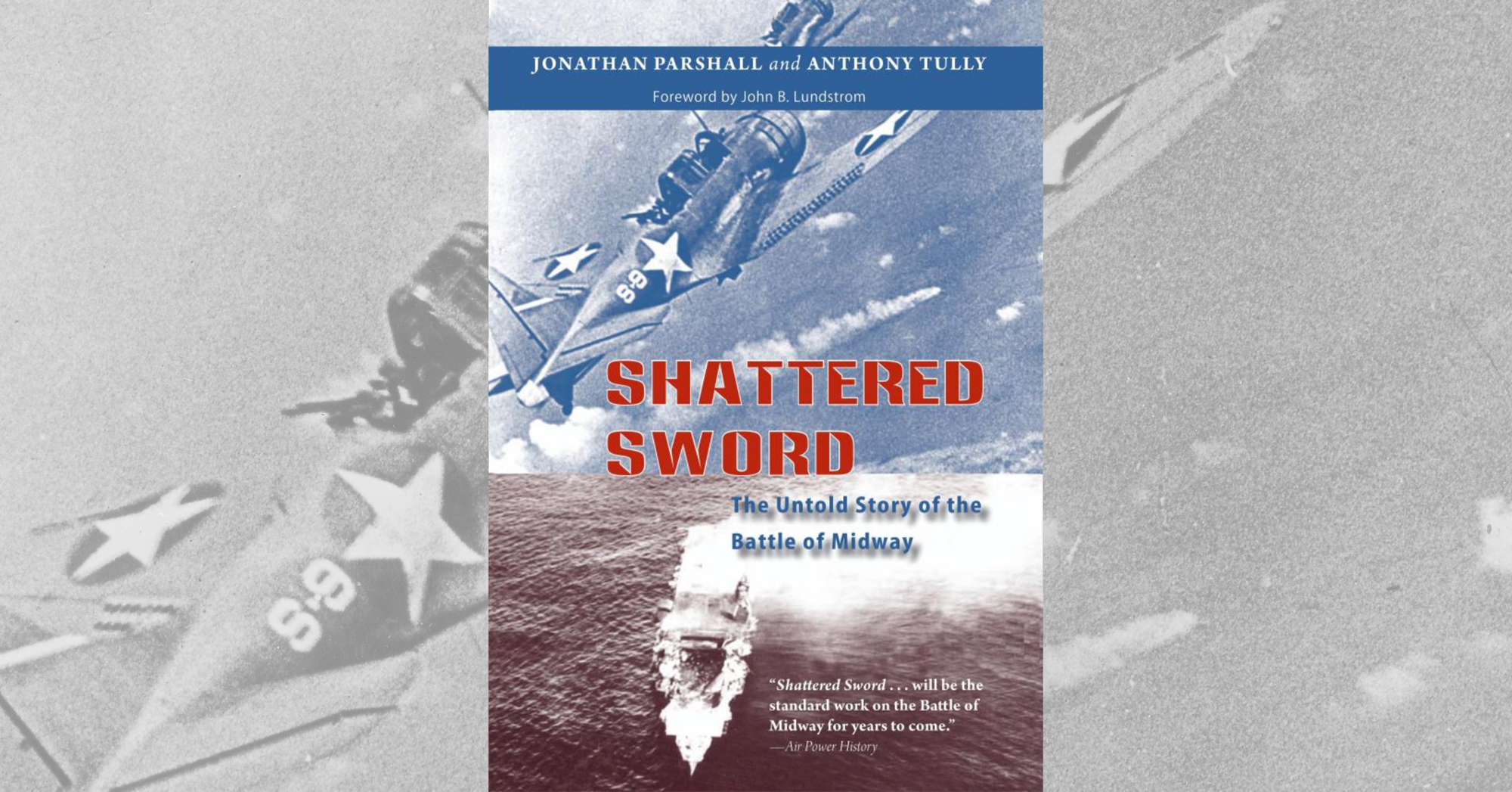Shattered Sword: The Untold Story of the Battle of Midway, by Jonathan Parshall and Anthony Tully (Potomac Books, Dulles, Va., 2005, $35), shatters all previous notions of how the battle was fought. It also redefines the standards for military reference works and will come to be regarded as a benchmark against which other battle narratives should be measured. The authors’ detailed chronological analysis, together with multiple (and credible) eyewitness testimonies and a lucid explanation of the technical options and limitations that defined how the Japanese fought the engagement, makes for an impressive account.
Shattered Sword utterly refutes the conclusions of most of the previous accounts of the battle, especially those of the long revered Midway: The Battle That Doomed Japan, by Mitsuo Fuchida and Masatake Okumiya. Fuchida’s book was for years accepted as reliable because he was a surviving leader, but Parshall and Tully prove that he often lied as part of a larger agenda to refurbish the good name of the Japanese navy.
The more you thought you knew about the Battle of Midway, the more you will enjoy the avalanche of new knowledge the authors rain down upon you in 613 fascinating pages of text, diagrams, photos and appendixes. The authors clearly relish demolishing the accepted myths of the past. Perhaps most important, they reevaluate reputations with a fair if sometimes savage candor.
In terms of reputation, it should be noted at once that instead of Admirals Isoroku Yamamoto, Nobutake Kondo and Chuichi Nagumo, it turns out that it was Admirals Curly, Moe and Larry who were in charge of the Japanese forces. Yamamoto has been celebrated in both Japan and the United States as the military genius who was the architect of all of Japan’s early victories Shattered Sword reveals him as a bumbling incompetent whose flawed strategy for Midway reflected the fatal flaws of the Japanese military system. Yamamoto was at the forefront of a naval society that worked actively to invert everything it had learned and practiced since the 1905 Battle of Tsushima, and thus created a wartime scenario in which defeat was the only option.
The authors never reproach the physical courage of the top Japanese leaders, but they effectively indict their moral courage, which failed at almost every level from Yamamoto down to the carrier commanders. Contrasted with this is the incredible moral and physical courage displayed by the sailors and airmen. Although they focus on the Japanese side of the conflict, Parshall and Tully also expertly analyze U.S. actions during the battle.
The endless detail in the book would be exhausting if it was not illuminated by the authors’ writing, which deftly skips from colloquial to lyric to match the demands of the subject. In their minute-by-minute account of the battle, Parshall and Tully find ways to go to the heart of the Japanese difficulties, which included flawed planning, improper training, inadequate fire suppression methods and fatal instances where a commander’s sense of his personal honor overrode the dictates of the battle.
This book is a page turner, but its importance and wealth of detail will demand an immediate rereading. Before you start, try this: Write down the things you know about the Battle of Midway, and then check your mistakes off as you find out what really happened. If you get by without six checks, you are already a true expert!
Originally published in the May 2006 issue of Aviation History. To subscribe, click here.





